IT REMAINS one of the great cities of Europe, and although Dublin has changed dramatically over the year its character has remained pretty much the same.
When James Joyce, arguably its most famous son, was asked if he’d ever consider returning home to the city, he replied: “Have I ever left?” Generations of Dubliners living across the world probably also feel that — Dublin is that sort of place.
Between the reels and jigs
O’DONOGHUE’S on Merrion Row has been for decades the unofficial embassy of Irish traditional song.
The pub’s legend was forged in the 1960s, when The Dubliners more or less made the place their second home. Ronnie Drew’s gravelly voice, Luke Kelly’s ballads and Barney McKenna’s banjo and John Sheahan’s fiddle turned the back room into one of Dublin’s most important cultural incubators.
Today musicians still drift in with fiddles and flutes as casually as commuters with newspapers.
Traditional Irish Music Archive
FOR further appreciation of Ireland’s traditional music, head for the Irish Traditional Music Archive. Admission is free to this treasure trove of trad-dom, now holding the largest collection of Ireland’s music in existence.
Rare recordings of the seminal names in traditional music are available, as well as footage of early 20th-century appearances. The centre also covers Irish traditional music in the diaspora, from New York to London. There is extensive information on the early seisiúns in London from around the mid-20th century, the very origins of the traditional music seisiún that we recognise today.
You don’t need an appointment, and the main reading room is fully open to the public five days a week, admission free.
itma.ie
The recording studio tour
 Windmill Lane Recording Studios (Pic: Tourism Ireand)
Windmill Lane Recording Studios (Pic: Tourism Ireand)WINDMILL LANE Recording Studios (20 Ringsend Road, Dublin 4) offers a one-hour guided tour (50–60 minutes) that takes visitors behind the scenes in one of Ireland’s most legendary recording studios. You’ll visit the three live studios, hear stories of major artists like U2, Lady Gaga, The Cranberries, Ed Sheeran and more who recorded there, see a wall of platinum plaques and vintage gear, and even mix a track using their “virtual band” setup.
The hotels
The Chancery
THE Chancery on Ship Street Great, in the shadow of Dublin Castle, is one of the city’s top luxury hotels, just to the south of St Patrick’s Cathedral. For those who perhaps don’t value close proximity to a cathedral as a huge plus, it’s also within easy walking distance of some of Dublin’s top restaurants, bars and pubs. And at this time of the year it’s within striking distance of the Christmas markets — a canopy of twinkling lights, roasted chestnuts and mulled wine, the soft lilt of carol singers.
The hotel is currently offering its Romantic Festive Package from €295 based on two sharing, and including an overnight stay, traditional buffet breakfast, bottle of prosecco and other goodies.
www.thechanceryhotel.ie
The Shelbourne
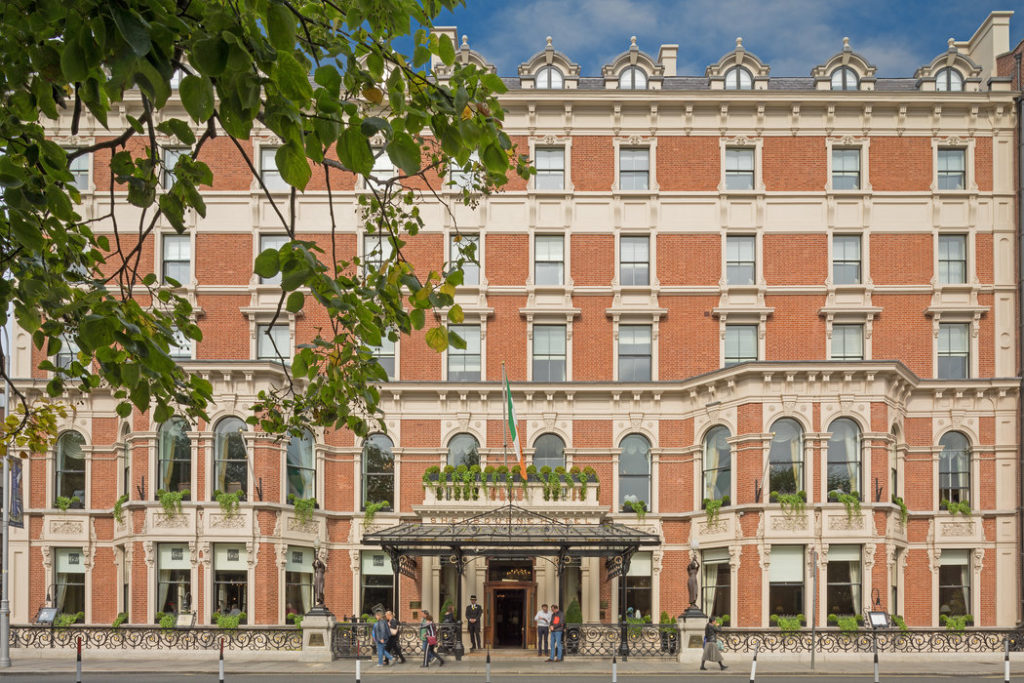 The Shelbourne Hotel, Dublin
The Shelbourne Hotel, DublinTHE grand dame of Irish hotels. The Shelbourne resounds with echoes from Ireland’s momentous past. This is where, you will be told by a helpful bar person, two very significant events in Irish history happened: the drawing up of the Irish Constitution and the creating of Black Velvet, the Guinness and champagne cocktail.
Even if you’re not planning to indulge in an overnight stay (while the rooms are without fault, we know that even looking at the price can make the eyes water), you have to spend some time here. Dining? Book a table at the Saddle Room, which features top-drawer food, presentation and service. Partaking in a tipple or three? Make a beeline for the Horseshoe Bar, which is a classic of its kind in Ireland if not in Europe.
www.theshelbourne.com
The heritage site
Kilmainham Gaol
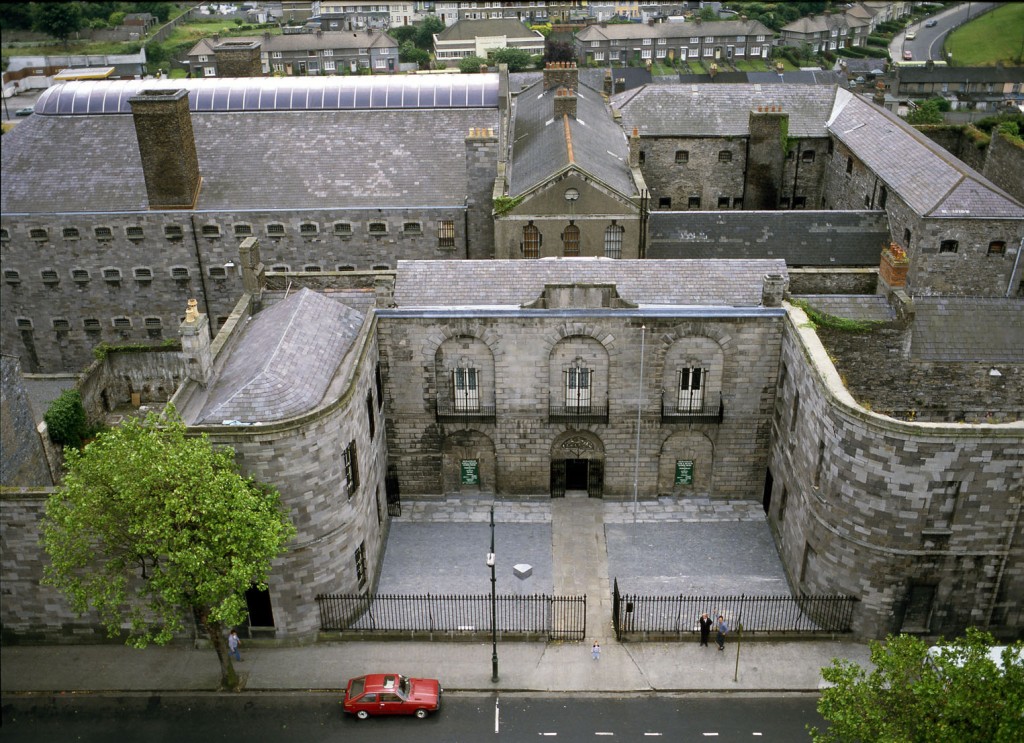 KIlmainham Gaol in Dublin City
KIlmainham Gaol in Dublin CityKILMAINHAM GAOL opened for business in 1796 and was operational until 1924. Many of the leaders of rebellions and uprisings over those centuries were incarcerated and executed here. Most famously, the leaders of the 1916 Easter Rising were put to death here — with consequences that are still felt today.
Many ordinary citizens, including children, were jailed here as well.
Originally, public hangings took place at the front of the prison. But from the 1820s onward very few hangings, public or private, took place at Kilmainham. A small hanging cell was built in the prison in 1891. It is located on the first floor, between the west wing and the east wing.
A tour of Kilmainham Gaol is a poignant and at times harrowing experience.
kilmainhamgaolmuseum.ie
Park and recreation, plus history
ST STEPHEN'S GREEN, an exquisitely manicured park, dates back to a time when open space and fresh air were at a premium: Victorian Ireland, 1880.
In 1880 Sir Arthur Edward Guinness, later Lord Ardilaun, funded its restoration and opened it to the public.
Today, it remains a green refuge in the city, popular with office workers, tourists and students alike.
The park bears the imprint of Irish political and cultural history. The Fusiliers’ Arch at the Grafton Street entrance commemorates Royal Dublin Fusiliers killed in the Second Boer War and bears marks consistent with 1916 gunfire. During the Easter Rising, members of the Irish Citizen Army under Michael Mallin and Countess Markievicz briefly occupied the park before retreating to the nearby Royal College of Surgeons.
On the south side, a bronze bust of James Joyce, sculpted by Marjorie Fitzgibbon in 1982, faces Newman House, which housed University College Dublin during Joyce’s student years.
Stories in every snug, every sip
THE Palace on Dublin’s Fleet Street is one of the great bars of the world, in the same company as the Bull and Castle on Lord Edward Street, near Christ Church. Both are almost the embodiment of “Dublin in the rare ould times”.
Unlike most other pubs in Dublin which have been frequented by a battalion of the finest writers in the English language, Ryan's in Parkgate is notable in that Ludwig von Wittgenstein was a local. The philosopher regularly sat in the pub, doubtless thinking thoughts along the lines of: “Whereof one cannot speak, thereof one must be silent.”
Philosophy, eh? Makes you think.
DOHENY & NESBITT’S is crowded most of the time. The mahogany-lined and glass-fronted snugs at lunchtime are filled with office workers, groups of businessmen, politicos from Leinster House (TDs and journalists), visitors, locals, all enjoying the Guinness or tucking into hearty food.
The barman approached through the throng, multi-tasking on the way: cleaning tables, stacking empty glasses, dispensing racing tips to a snugful of construction workers, keeping his eye on the Guinness taps. He arrived at our table with the lunchtime menu. “Ach,” he said, “there has to be an easier way to make a thousand euro a week.”
dohenyandnesbitts.ie
A Dublin rite of passage
NO VISIT to Dublin’s coast is complete without a stop at the Forty Foot, the legendary bathing spot at Sandycove, just a short DART ride from the city centre. Once an exclusive gentlemen’s swimming club in the 19th century, the Forty Foot is now open to all, year-round, regardless of weather or water temperature — a cool tradition.
Despite its name, it isn’t exactly 40 feet deep — but no one can quite agree where the title comes from. Some say it refers to a British regiment once stationed nearby; others suggest it was just a convenient nautical exaggeration. No one can, ahem, fathom it. What is certain is that the spot has been drawing brave bathers for over 150 years.
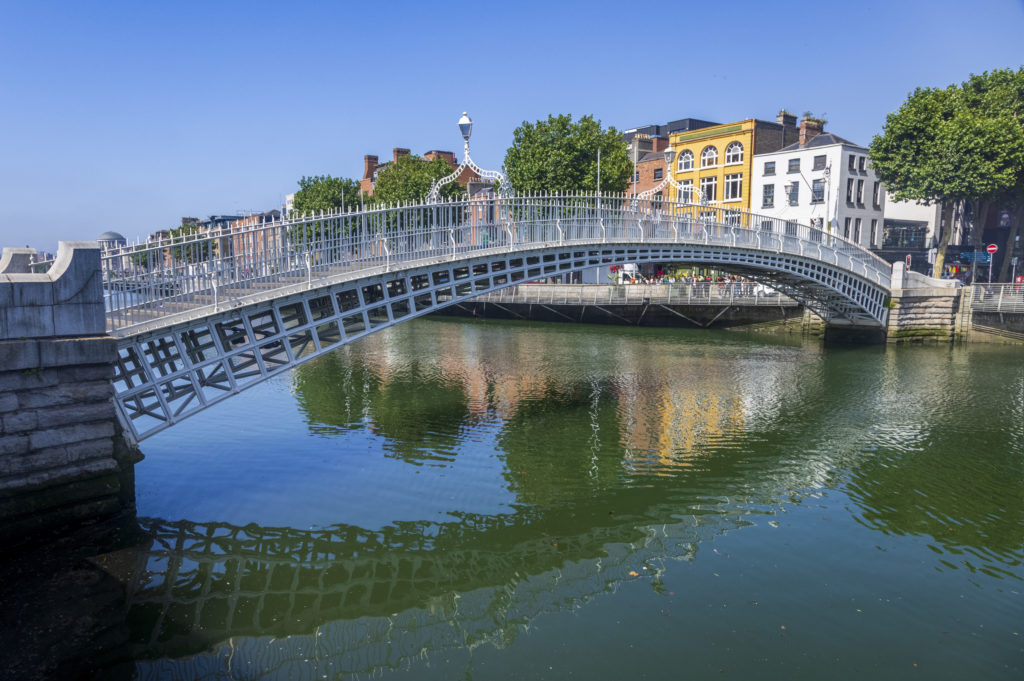 The Ha'penny Bridge crosses the River Liffey in Dublin
The Ha'penny Bridge crosses the River Liffey in DublinThe Forty Foot crops up in Irish literary history. James Joyce set the opening scene of Ulysses just above the rocks, at the Martello Tower. Buck Mulligan — towel over shoulder — headed for a dip in the Irish Sea. You can follow in his footsteps, if you think you’re hard enough.
Where the books are older than the dust
YOU’RE on your holliers, so no better place to head for than Marsh’s Library. Ireland’s oldest public library was founded in 1707 by Archbishop Narcissus Marsh (now that’s an excellent name for a bishop) and holds over 25,000 books from the 16th–18th centuries. The library smells of candle wax, polished wood, leather and old books (naturally enough), and the shelves are still enclosed in their original 18th-century cabinets.
Brew with a view
THE HQ of the black stout, the Guinness Storehouse, has restaurants that serve fresh food designed to pair with Guinness. And although you wouldn't come here specifically to eat, once you've downed a pint or two, you'll be glad of the facility. Also, advance tickets come with a complimentary pint in the Gravity Bar when you complete your tour. This gives you one of the finest views across Dublin.
guinness-storehouse.com
Where art meets architecture
THE Irish Museum of Modern Art (IMMA) is Ireland’s home for modern and contemporary works by Irish and international artists, housing over 4,500 pieces in its collection, all from the 1940s and later.
imma.ie
In good spirits
JAMESON Distillery, Bow Street, is a distillery-turned-museum and an attraction for all whiskey lovers. It stands at the site of Jameson's original distillery, dating back to 1780, though the brand's major production now takes place in Cork. The 40-minute distillery tour includes a comprehensive Jameson history, a tasting section, and a drink on the house at JJ's Bar, the downstairs whiskey bar.
jamesonwhiskey.com
Let there be light… reading
THE world was created on October 23, 4004 BC at around 6pm according to erstwhile Archbishop of Armagh James Ussher. (The specificity of that ‘6pm’ is quite arresting — “The end is nigh, but we’ll have our tea first.”)
Archbishop Ussher’s idea of the Creation may be at odds with current scientific thought, but the Armagh prelate’s personal literary collection remains a core part of Trinity College Library. As regards the end of the world, he was so learned that he was able to resist the temptation to talk about Armaghgeddon. Sadly, lesser mortals have been unable to follow the great man.
But part of his life’s works live on in Trinity, and nearby is the Book of Kells — a tome that most definitely defies the old saw “you can’t tell a book by its cover”.
Produced by Celtic monks around AD 800, it is quite simply one of the most beautiful man-made creations you'll ever see. It was written in Latin on the vellum of, reputedly, 170 cattle — sadly there’s no vegan version, no vegetarian option.
tcd.ie/library/manuscripts/book-of-kells.php
A staircase, a meal, and a view of the void
THE Winding Stair, named after a Yeats poem, features Irish, British and European editions of contemporary literature as well as soda bread in the restaurant upstairs. Grab a good book, a sarnie and head above for views of the River Liffey. Clear your mind, forget the great unknowables of life, enjoy the food and soak in the atmosphere of Dublin. As Beckett himself said: “What do I know of man's destiny? I could tell you more about radishes.”
www.winding-stair.com
Global echoes in EPIC
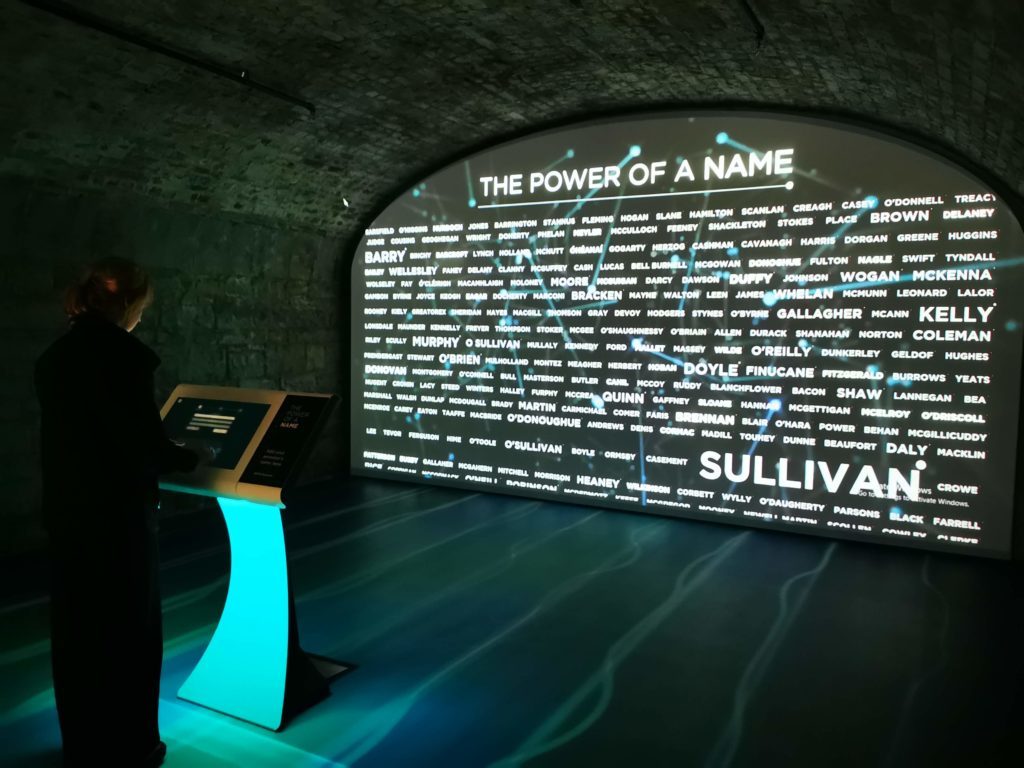 EPIC The Irish Emigration Museum
EPIC The Irish Emigration MuseumTHE Irish Emigration Museum (EPIC), located in Dublin's Docklands, is an exploration of Ireland's emigration story. It highlights the journeys of over 10 million Irish people who left the island. Through interactive exhibits, visitors discover how Irish emigrants influenced global culture, politics and science.
The museum covers the Great Famine, conflict and opportunity, showcasing personal stories alongside broader historical narratives. EPIC emphasizes the enduring impact of the Irish diaspora worldwide.
This digital museum features 1,500 years of Irish history and relives some of the greatest achievements in music, literature, sport, politics, fashion and science.
epicchq.com
The restaurants
A HUGE range of gastronomic treats now delights in Dublin, both the citizen and the visitor, enough to tempt the most exacting of gourmets. These are just two that can provide top dining:
CHAPTER ONE
CHAPTER ONE remains one of the capital’s calling-card restaurants. Tucked into Parnell Square, it blends contemporary Irish cooking with French precision, all underpinned by an almost scholarly respect for Irish producers. The dishes are beautifully composed without ever feeling fussy, and the room has that rare Dublin mix of formality and warmth.
Website: www.chapteronerestaurant.com
SOLE Seafood & Grill
If you’re up for seafood, SOLE on Drury Street is the address. It’s a polished, contemporary dining room specialising in Irish coastal cooking: oysters, crab, monkfish and whatever the boats have landed that week. Service is smooth, the cocktails are sharp, and there’s a lively bustle. This is Irish seafood done properly.
www.sole.ie
The church and the cathedral
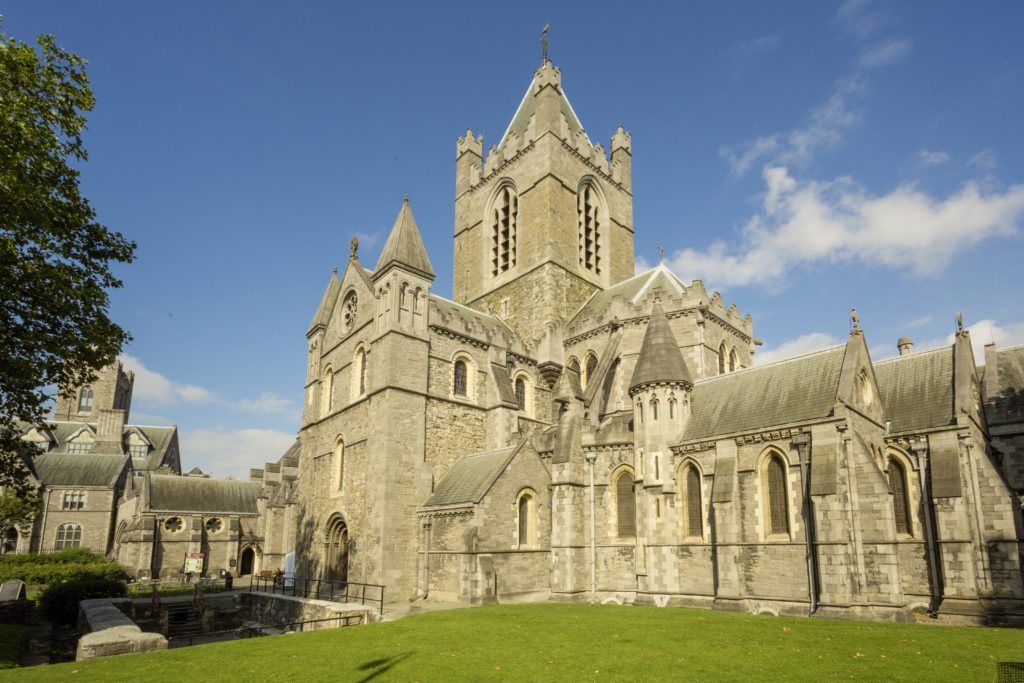 Christ Church Cathedral in Dublin
Christ Church Cathedral in DublinOK, LED ZEPPELIN may have played the very first live version of Stairway to Heaven in the Ulster Hall in Belfast (really), but St Michan’s Church in Dublin 3 has the very organ, built exactly 301 years ago in 1724, on which Handel practised his Messiah. While he composed the oratorio in London, the organ offers a rare surviving connection to his time in Ireland.
Originally St Michan's was built to serve the Viking community, expelled from the walled city, and for almost five hundred years this was the only parish church on the northside of the river.
Charles Stewart Parnell's coffin lay on its altar, according to legend, while the great political thinker Edmund Burke (born nearby at Arran Quay), as well as the Dublin-born Duke of Wellington, were baptised in its font, still in use to this day.
Robert Emmet is said to be buried in an unmarked grave at the back of the cemetery, while the death mask of Wolfe Tone can be seen inside.
The church, which was built in 1685–86 on the site of a former (probably) Danish chapel, is famous for its collection of mummified bodies stored in the vaults. The limestone in the ground has kept the air dry and has helped preserve the earthly remains of crusaders, leaders of the 1798 Rebellion, plus the ordinary people of Dublin.
www.stmichans.com
IRELAND’S oldest cathedral, Christ Church, was founded sometime after 1028 by King Sitric Silkbeard, the Hiberno-Norse king of Dublin. It was a Viking wooden affair, so a complete rebuilding was commissioned in 1172 by Norman overlord Strongbow, aided by Archbishop Laurence O’Toole, Dublin’s patron saint — both of whose remains lie in the cathedral.
A short stroll from Christ Church is St Patrick's Cathedral. The patron saint baptised converts to Christianity in the grounds of the cathedral with water from a local well. Since then (5th century), a church has stood on the grounds.
The Normans built a substantial edifice in the 12th century, the core of today’s cathedral. Jonathan Swift, dean here in the 18th century, has a suitably impressive epitaph on his tombstone:
Here is laid the body of Jonathan Swift, Doctor of Divinity,
Dean of this cathedral Church, / Where fierce indignation can no longer
Rend his heart / Go, traveller, and imitate if you can
This earnest and dedicated Champion of Liberty
Near Swift's tomb is a wooden door through which the Earl of Ormond and the Earl of Kildare shook hands ending a feud in 1492 — said to be the origin of the phrase “chancing your arm”.
For further information visit ireland.com

